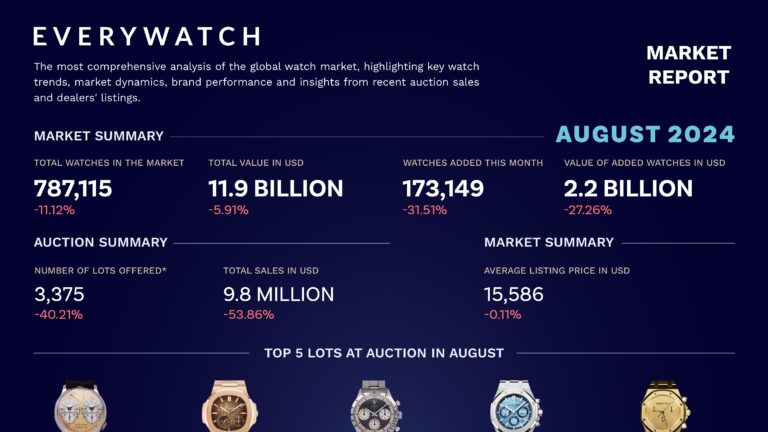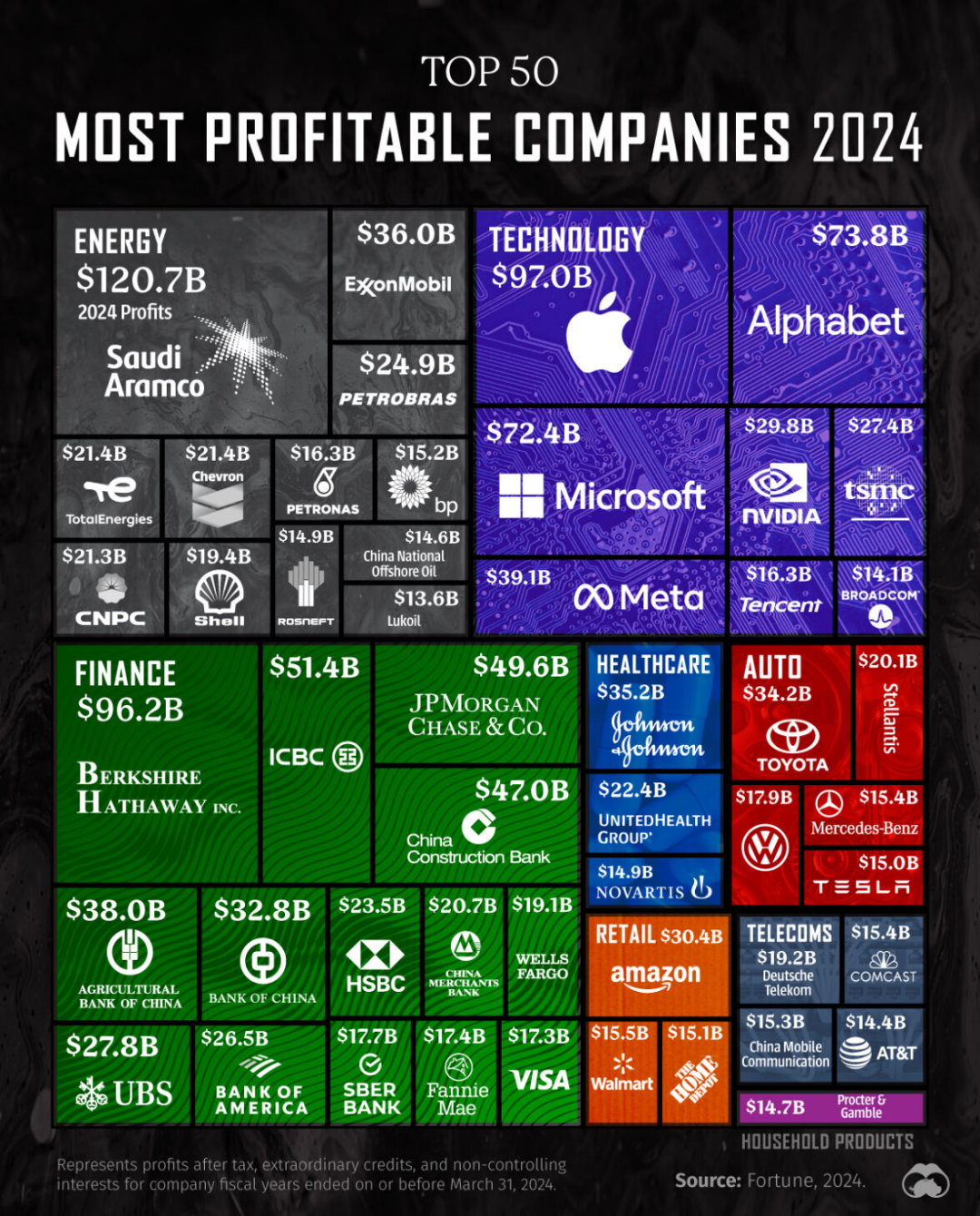Is the watch industry on the brink of transformative change or facing a downturn? As we delve into the Global Watch Market Analysis for August 2024, we unravel a complex narrative marked by regional shifts and emerging trends.
Curious about the overall market health?
Despite a decline in the total number of watches and their value—standing at 787,115 units and $11.9 billion, respectively—regional performance offers a nuanced view. North America shows promising growth, while Asia continues to dominate luxury watch exports. Meanwhile, Europe, Oceania, and Africa confront various challenges.
This comprehensive overview highlights crucial statistics, guiding stakeholders through a thorough understanding of market dynamics from all angles today.
Overview of the Global Watch Market in August 2024
The global watch market as of August 2024 has experienced a contraction, with the total number of watches in the market reaching 787,115 units, marking an 11.12% decline. The total market value stands at $11.9 billion, a 5.91% decrease from previous figures. Despite these declines, regional performances varied, revealing a complex landscape of growth and decline across the globe.
North America emerged as a significant growth area, showcasing resilience amidst the broader market contraction. Meanwhile, Asia continues to dominate, accounting for 47.7% of global luxury watch exports, underscoring its pivotal role in the luxury segment.
Europe and Oceania have faced slight declines in their market performances, reflecting economic and consumer challenges. However, the most pronounced challenges were observed in Africa, where market revenues saw a significant decrease, indicating potential economic or logistical hurdles.
- North America: Demonstrated notable growth, defying the overall market trend.
- Asia: Maintained dominance with 47.7% of global luxury watch exports.
- Europe: Experienced a slight decline, indicating regional challenges.
- Oceania: Also faced a slight downturn in market performance.
- Africa: Encountered a significant decrease in market revenues, highlighting regional difficulties.
The current snapshot of the global watch market emphasizes the diverse regional dynamics at play, with certain areas thriving while others grapple with economic pressures.
Key Trends and Innovations in the Watch Industry
The watch industry in August 2024 has witnessed a marked shift in consumer preferences toward high-quality, durable luxury watches. This trend reflects the growing demand for timepieces that not only serve as status symbols but also offer longevity and resilience. Consumers are increasingly valuing craftsmanship, leading to a surge in the luxury segment where brands are focusing on premium materials and intricate designs.
Technological Advancements in Watches
Tech integration has become a pivotal driver in the watch industry, with brands leveraging digital transformation to enhance both functionality and consumer appeal. A notable innovation is the Seamaster "unit watch", designed specifically for law enforcement, which integrates advanced features catering to professional requirements. This watch exemplifies how technological advancements are meeting niche demands, thereby expanding market reach.
Omega's marketing campaign during the Olympic Games has further highlighted the intersection of technology and tradition, showcasing watches that blend classic aesthetics with cutting-edge technology. This strategy not only boosts brand visibility but also underscores the importance of innovation in maintaining market competitiveness.
- Consumer Shift to Luxury: Increasing preference for luxury watches with durable and high-quality materials.
- Professional Innovations: Launch of specialized watches like the Seamaster "unit watch" for law enforcement.
- Tech-Driven Designs: Enhanced functionality through tech integration, exemplified by Omega's innovations.
- Digital Marketing Impact: Omega's Olympic campaign demonstrates the power of strategic marketing.
- Sustainable Practices: Rising trend of eco-friendly materials and sustainable manufacturing processes.
These key trends illustrate the dynamic evolution of the watch industry, where innovation and consumer preferences are reshaping market dynamics. As brands continue to push the boundaries of technology and design, the industry is poised for further transformation.
Market Challenges and Economic Factors
How have economic factors impacted global watch demand? Inflation and currency fluctuations, notably the strong Swiss franc, have significantly influenced global watch demand. As inflation rises, consumer purchasing power diminishes, leading to reduced spending on luxury goods, including watches. Additionally, currency fluctuations have created pricing inconsistencies, making watches less affordable in certain markets, further dampening demand.
The Swiss watch industry has been particularly affected, facing a 3.3% decline in global exports. This downturn is largely attributed to the strong Swiss franc, which has made Swiss watches more expensive and less competitive internationally. The secondary market for luxury brands has also experienced price declines, reflecting shifting consumer preferences and economic constraints.
What supply chain challenges are affecting the watch industry? The industry is grappling with significant production and distribution hurdles. Disruptions in the supply chain have led to delays and increased costs, impacting the availability and pricing of watches. These challenges are compounded by geopolitical tensions and trade barriers, which further strain the global supply network.
Despite these obstacles, the luxury watch market still presents investment potential. The demand for high-end, timeless pieces remains, albeit at a slower pace. Investors are drawn to the long-term value and prestige associated with luxury timepieces, even as the market navigates economic headwinds.
| Region | Economic Impact |
|---|---|
| North America | Moderate demand fluctuation due to inflation |
| Europe | Price increases due to strong Swiss franc |
| Asia | Stable demand, but supply chain disruptions |
| Oceania | Decreased demand linked to economic slowdown |
| Africa | Significant revenue decline due to economic challenges |
Performance of Major Watch Brands
In August 2024, the global watch market has seen significant strategic maneuvers from leading brands, impacting their market positions. A notable change is Rolex's decision to end its Formula 1 sponsorship in 2025, which marks a shift in its marketing focus. This move indicates a potential reevaluation of its brand strategy, possibly redirecting resources to other areas that align more closely with its luxury image.
Meanwhile, Omega has capitalized on its marketing efforts during the Olympic Games, successfully enhancing its brand visibility and strengthening its position in the luxury segment. Omega's ability to leverage such high-profile events underscores its commitment to maintaining a strong presence in the competitive landscape.
The Swiss secondary market has reported price declines for prestigious brands like Rolex and Audemars Piguet. This trend suggests a shift in consumer preferences, possibly driven by economic factors and changing luxury consumption patterns.
Brand Strategies and Market Positioning
Bremont has faced financial challenges, as evidenced by its losses and mixed reception at the Watches and Wonders 2024 event. To navigate these difficulties, Bremont is likely focusing on refining its product offerings and enhancing customer engagement to regain market confidence.
LVMH's strategic move to align TAG Heuer with Formula 1 following its takeover reflects a keen understanding of brand synergy. By associating TAG Heuer with the high-speed world of F1, LVMH aims to bolster its brand positioning and appeal to a dynamic audience.
- Rolex: Ending F1 sponsorship to potentially redirect marketing strategies.
- Omega: Leveraging Olympic exposure for increased brand visibility.
- Bremont: Adapting to financial losses with strategic adjustments.
- LVMH and TAG Heuer: Aligning with F1 for stronger brand synergy.
- Audemars Piguet: Facing price declines, adjusting to market changes.
These strategic shifts illustrate how major watch brands are adapting to market pressures while seeking opportunities to enhance their competitive positions.
Future Outlook and Forecasts for the Watch Market
What are the anticipated market growth and challenges for the rest of 2024? The global watch market is expected to face both challenges and opportunities as it navigates through the latter half of 2024. While economic pressures persist, markets such as the USA and Japan are poised for growth due to increasing consumer interest and innovative product offerings. These regions are emerging as key players, driven by technological advancements and a growing appreciation for luxury timepieces.
The 2024 luxury watch market report points to significant opportunities for expansion, particularly in these emerging markets. However, brands must remain vigilant of economic fluctuations and evolving consumer preferences that could impact demand.
- USA and Japan: Identified as emerging markets with potential for growth.
- Technological Advancements: Continued integration of technology is a key driver.
- Economic Fluctuations: Potential challenges due to global economic conditions.
- Consumer Preferences: Shifts towards luxury and innovation shape market dynamics.
These forecasts indicate a dynamic landscape for the watch market, with strategic opportunities for brands willing to adapt and innovate through 2033.
Final Words
The global watch market analysis as of August 2024 revealed a nuanced landscape with shifting dynamics.
While the total market size and value decreased, regions like North America showed resilience, and Asia maintained its dominance in luxury exports.
Consumer preferences leaned towards durable luxury watches, signaling a trend towards quality over quantity.
Technological advancements like the Seamaster "unit watch" are pushing innovation boundaries.
Despite economic challenges and a disrupted supply chain, it presents opportunities for strategic brand repositioning and growth in emerging markets like the USA and Japan.
As the year progresses, monitoring industry trends and market shifts will provide valuable insights for stakeholders.



